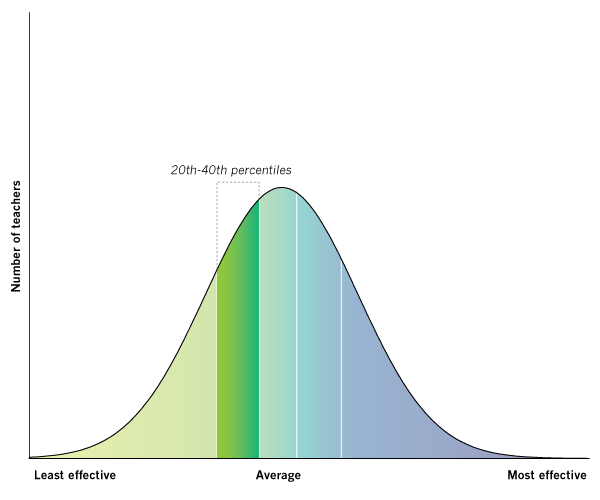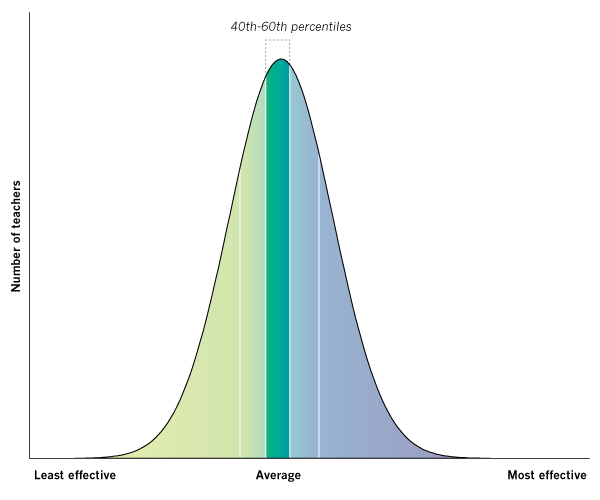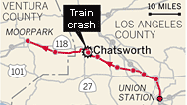Carla I. Tott
A 5th grade teacher at Charles H. Kim Elementary in 2009
These graphs show a teacher's "value-added" rating based on his or her students' progress on the California Standards Tests in math and English. The Times’ analysis used all valid student scores available for this teacher from the 2002-03 through 2008-09 academic years. The value-added scores reflect a teacher's effectiveness at raising standardized test scores and, as such, capture only one aspect of a teacher's work.
Compared with other Los Angeles Unified teachers on the value-added measure of test score improvement, Tott ranked:
- Less effective than average overall.
- Less effective than average in math. Students of teachers in this category, on average, lost about 4 percentile points on the California Standards Test compared with other students at their grade level.
- Average in English. Students of teachers in this category, on average, did not gain or lose significantly on the California Standards Test compared with other students at their grade level.
Tott's LAUSD teaching history
2002-03 through 2008-09 academic years
- Charles H. Kim Elementary, 2009 - 2007
- Dayton Heights Elementary, 2006
Carla Tott's Response:

I could have told you where I would have ranked in your standards of measure without the use of your database. As responsible educators, the teachers at my school site take the time to analyze the CST scores of their students every year. We take the results of our analysis and use them to help improve our strategies and directions in teaching. I have many color coded sheets that show the details of the generalized results you are releasing to the public. Out of respect for the privacy of my students, I will not go into the details of their scores. Also, I would have been able to tell you that I would have measured low in a system that measures a teacher’s effectiveness by looking only at the results of standardized testing, for I am not your standard teacher. I am a teacher that follows a specific educational philosophy that focuses on the needs of the individual student. In addition, I have certain strengths in my teaching style that has encouraged the administration of my school to assign students with specific educational needs to my classroom. Again, out of respect to the privacy of my students, I will not elaborate on the detail of these needs.
To put this series of articles into perspective, I approached them as an assignment that was turned in by a student. My comments on the writing would be as follows:
Good start and interesting topic. I encourage you to ask yourself the following questions as you continue on this assignment. What is your main purpose? Can you isolate your specific argument? Clarify if you are for or against standardized testing? Have you presented a fair and balanced representation of the populations discussed? Are all groups of students, families of students, LAUSD, teacher unions, administrators, and all types of teachers realistically depicted? Remember, generalization can be a lazy approach to skirting further research. What do you propose as a solution to the problems you have brought to light? Like I said, good start, but this writing piece is clearly incomplete.
Personally, I can say that this data base shows only one faction of what can be used to determine my effectiveness as a teacher. Now that you have started on this path, the responsible thing to do would be to continue educating the public on the remaining elements that make effective teachers. For example, make-up of student populations in a classroom, impact of language, strategies of teaching, and those elements of which neither teachers nor students can control that might impact their performance on a standardized test like the design of standardized tests, amount of administrative support, and demands in the home of students.
I would also encourage you to take responsibility of educating the public on the method used to find an average score for teachers. I may only rank as “less effective”, but I do teach my students how to find the average (or mean) of a group of numbers every year. It’s a standard. However, within this lesson, I make sure to depict how the presence of a few extreme numbers (outliers) can skew the process and give a misleading result. By doing so, I hope to promote critical questioning of statistics and responsible reporting of data among my students.
To the members of the public that are looking at these results, I will not make excuses for being labeled a “less effective” teacher. I don’t think this situation warrants any excuses. I stand by the choices I have made in my classroom. Like I tell my students who have received lower grades on class tests, a low score is only the latest starting point on which you must improve. Having ranked as less effective will only help motivate me to continue to strive to improve as a teacher. But, even if I would have ranked “most effective”, I would have reached the same conclusion, for I believe that a teacher can always find areas to improve. However, if it means being called less effective in order for my students to receive the individualized attention they need in my classroom, I am willing to stick with the label. It is a small sacrifice to make in order to help my students gain sturdy educational foundation to build for the rest of their lives. Besides, name calling never amounts to much whether it takes place in elementary school classroom or within the pages of a newspaper.
To the authors of the article, you taken it upon yourself to help evaluate teachers and bring attention to the results and impact of standardized testing. In doing so, you found some problems in the educational system. Specifically, you have found me not meeting the standards of teaching. I thank you for this and ask you for suggestions to help improve the test scores of my students. Here are some of the strategies I have already tried with my students:
• At least 100 minutes of instruction time a week dedicated to test-taking strategies
• Volunteering my time to teach after school test-preparation classes for students
• Inviting the families of my students to workshops I designed and lead which are aimed at giving families the tools they need to help support their children for success in their standardized tests
• Analyzing the released CST questions to determine what vocabulary, strategies, and skills my students need in order to have a fair chance at good performance during standardized testing
• Educating my students on the importance of the test in hopes to demystify it and make it a less frightening experience
Obviously these efforts are not effective enough, therefore, what do you suggest? What would be the most effective means of raising students’ test scores? I am always open to suggestions.
![]() The Times gave LAUSD elementary school teachers rated in this database the opportunity to preview their value-added evaluations and publicly respond. Some issues raised by teachers may be addressed in the FAQ. Teachers who have not commented may do so by contacting The Times.
The Times gave LAUSD elementary school teachers rated in this database the opportunity to preview their value-added evaluations and publicly respond. Some issues raised by teachers may be addressed in the FAQ. Teachers who have not commented may do so by contacting The Times.
|
|
 Delicious
Delicious
|
 Digg
Digg
|
 Facebook
Facebook
|
 Twitter
Twitter
|









